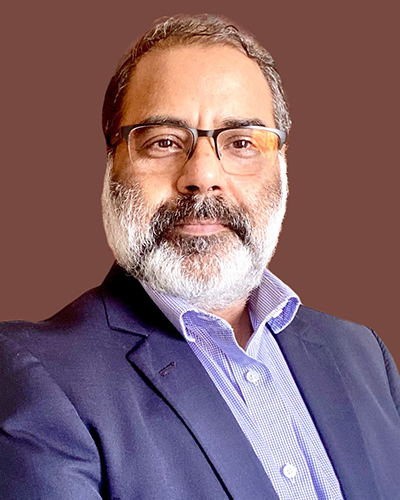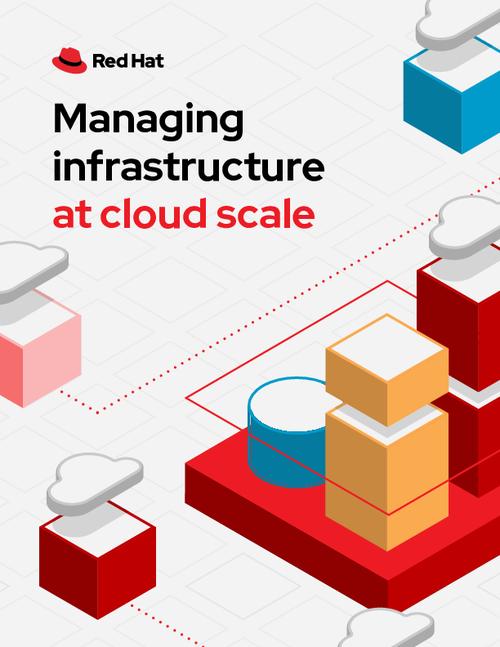Why Digital Transformation Is 90% Organizational Transformation
Transformant President Says Execution Methodology Used for DT Is Insufficient
Tony Saldanha is the president of Transformant and the former VP of Global Business Services (GBS) and Next Generation Services, Proctor & Gamble (P&G). A widely acclaimed industry leader, Saldanha has held CIO positions, managed acquisitions and divestitures, ran large-scale outsourcing, created industrywide disruptive innovation structures, and designed new business models.
See Also: Key Security Challenges and Tooling Approaches for 2024: Survey Results Analysis
Saldanha has also recently published a book, "Why Digital Transformations Fail: The Surprising Disciplines of How to Take Off and Stay Ahead."
In this exclusive interview, Saldanha shares what sparked the idea of the book and also how CIOs should treat digital transformation (DT).
Edited excerpts follow:
Tell us about Transformant.
Post my stint with P&G, I founded Transformant. It was created to cater to two functions:
The first core function is to help companies - large and small - and individuals digitally transform themselves.
In addition, we have created internal shared services, GBS and BPO-related transformational services to be offered to companies across the spectrum.
My experience of more than 30 years in managing IT and shared services, across the globe, comes in handy. It is applied here to help organizations and individuals succeed to handle disruption.
You've spent nearly 27 years with P&G. How have you seen the shift from the traditional era to an era which we know as Industry 4.0 or the era of disruption?
I have been incredibly fortunate to grow with the evolution of information technology and the shared services industry. I was associated with creating P&G's first ever shared services center in the Philippines in 1993.I also managed the largest outsourcing deal ever in 2003 when we outsourced two-thirds of IT and shared services to HP (now HPE). This was a mammoth 10-year, $8 billion deal.
I was also the CIO of Gillette and led the successful integration of all company systems into P&G in a record 18 months to deliver more than $1 billion of Wall Street value creation. During my last three years at P&G, when Industry 4.0 was being introduced, I realized we weren't competing with other large companies. We were competing with the startups. They had half the cost and 10 times the agility of the best-in-class companies. That's when I created a division called Next Generation Services at P&G.
The mandate for that unit was to come out with 10x agility and productivity for internal business operations: 10 times better travel and expenses solution, supply chain planning solution, accounting/accounts receivable solutions, or purchase management solutions, etc.
I worked with two different sets of entities: large IT companies like IBM, HPE and TATA, and with numerous IT startups. We used P&G's expertise to ideate and completely disrupt internal operations. For example, why should there be a travel and expense system in today's world when you have data available through credit cards statement? Many such disruptive ideas were brought forth. We used our ecosystem to develop software products/solutions and gave away the intellectual property to the big IT companies. In return, we negotiated not to pay them to develop any of those capabilities for us.
You said competition/disruption comes from the startups. To compete with them, you need a different mindset, which is difficult to come by in a legacy organization. How did you work it out?
Generally, people treat digital transformation as a mere technology catchphrase. Whereas 90% is about organizational changes, and 10% is about technology.
At P&G, we did two things that is also the foundation for my book Why Digital Transformations Fail published by Penguin Random House recently. I first tried to redefine the phrase DT as a spectrum, from Stage 1, which caters to what people talk about, cloud and other automation; to Stage 5, which is essentially about rewiring the culture of the organization. That gives the framework for not just P&G but any company that wants to embark upon this journey.
We reached out to the best culture experts in the Silicon Valley and elsewhere, and created a methodology for how to involve the entire organization in coming up with 10x disruptive ideas. But we did it in a contained manner to avoid anarchy and chaos.
For example, in the Next Generation Services group, I selected the top 10 to 12 directors from IT and GBS and put them on an assignment for a couple of years. Their job was to work with all P&G companies and drive disruption by engaging the organization. If you convince them and bring them together, they will follow you. People don't necessarily support only the innovators, but also leaders with credibility. Before we attempt to bring change, we have to study what change is all about.
What inspired you to write the book? Though I found the title of the book slightly negative, it is also true that 70% of DTs do fail. What's the premise of the book?
I'd like to clarify that the original title of the book was 'Digital Takeoff.' But when I took the script to the publisher, I was told it was a terrible title. They said, "Nobody will ever pick up the book with such a title." Following that, we market-tested various titles through a survey and came up with the current title. In today's era of clickbait titles, this was perhaps more appropriate.
The premise of the book is simple. There are two reasons why DTs fail:
- One, because leaders, board members, CEOs, CIOs and even junior-level employees are unclear about what DT means. Is it about AI? Is it about cloud? It may sound trivial but it is true. I spoke to several executives and asked them what they thought of DT. I didn't get a very convincing answer. One of them said this has been ongoing for many years. We have had digital watches since the 1970s.
- The second issue, where all of my research and experience went, is in realizing that the execution methodology used for DT is insufficient and incorrect. The existing DT methodology uses IT project management capabilities such as Agile and Scrum. That's wrong. DT is not IT project management. The flawed methodology does not account for the fact that 90% of the change is cultural, and only 10% is technology.
When you're aiming for a real 10x disruption, you have to be like a venture capitalist. You have to have 10 ideas, and you should be willing to quickly fail on the nine of them, to succeed at the 10th one. That's what the premise of the book is.
People generally confuse DT with technology transformation. We can, at best, place technology as an enabler. The bigger constraint is mindset change/transformation, which may be augmented by the use of technology but cannot be technology-led. How do you think this mindset will change or should change?
That's a critical issue. I recommend the following two things:
- One, which many CIOs are going to view as a threat, but it is not, is that the role of the CIO has to change from a person that drives scale and governance to becoming a resource provider. For example: Human resources don't try and control every person in an organization. They enable them. In the book, I have a chapter on how I think the CIO community needs to evolve. Forward-thinking CIOs are already doing this.
- Secondly, CIOs need to play the role of an educator. They should educate CEOs and the board of directors that we are in the midst of the fourth industrial revolution. Asking CIOs to own DT is unfair. It has to be owned by the CEO and the board. And there's enough empirical evidence from Harvard and other similar institutions to support that. CIOs need to invest time and energy on this education.
When we talk of DT, even the most acclaimed leaders take a siloed approach. They would like to ignite transformation in a particular function and let that live in a silo. How can this jinx be broken? How can DT be looked at as one overarching mission for an organization?
Your question ties into the point I made around the different definitions of DT. In the five-stage model that I described, Stage 1 is the 'foundation' - its automation and not transformation. Stage 5 is 'culture change,' which brings about a wholesome transformation. Stage 2 is what you're describing as a 'silo.' A CFO may say he'd like to digitally transform his function because that's within his control and he will not consult anyone else. That's a flaw. Stage 3 is what I call 'partially synchronized,' where a company makes an announcement of being a digital company at the start of the journey, but for various reasons, nothing is complete. Stage 4 is 'fully synchronized' - the whole company technically transforms, but they have not changed the culture. It may do well for a while but will eventually fail.
I work with the CEOs and boards of nearly 20 of the Fortune 100 companies. My endeavor is to educate people bottom-up and top-down, and to not confuse DT with IT strategy.
Organizations have to rethink about:
- What is the new business model they need to survive in the fourth industrial revolution?
- What's their disruptive internal business operation strategy? How do they go about running the internal operations at half the cost and 10 times the agility, the way startups do?
- How do they create smart products?
The company's strategy group needs to make those decisions. I think the role of a CIO is to not only educate the company but also to lead the charge on how to make these ideas achievable.
You work with several Fortune 100 companies and consult them on their DT initiatives. Can you provide some examples of industries that you think are doing well? What is their approach and why are they successful?
The industry that's doing the best, based on my experience, is the financial sector - more specifically, investment banking and not necessarily the consumer/retail banking or some of the insurance companies. The industry that is doing terribly is pharmaceutical and medicine.
The finance industry, especially after the 2008 economic crisis, has picked pace. For example: Fidelity, in the U.S., decided to use DT as their tool for driving competitive advantage. They even invested in conferences on blockchain. But blockchain is a promising tech that has the potential to disrupt the financial sector. They went after it because they wanted to disrupt themselves. Now you start creating completely new business models and get into the blockchain platform for moving money around, whether it is intra-company transfers or whether it is completely trust-based money moving. We should give due credit to them. That's how digital transformation is made successful.
This article was previously published on the DynamicCIO website on Sept. 2, 2019.

















